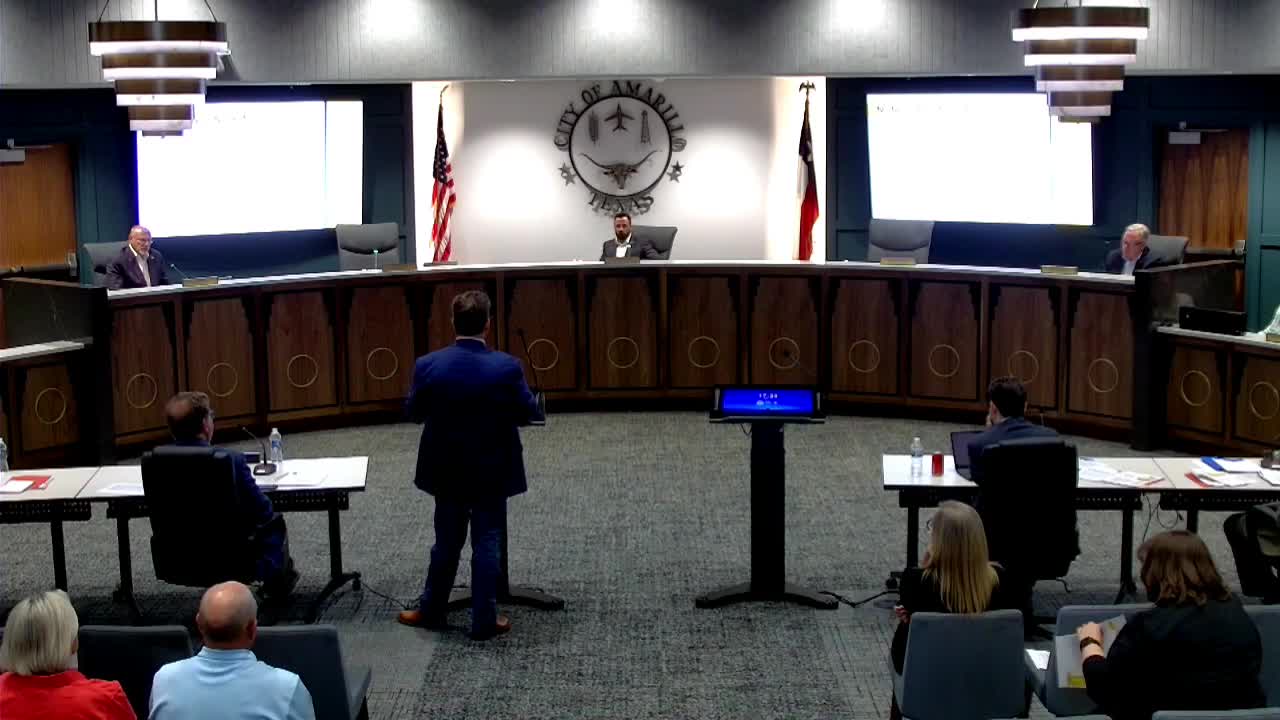Amarillo City Council proposes new moderate density zoning district for housing options
September 09, 2025 | Amarillo, Potter County, Texas
This article was created by AI summarizing key points discussed. AI makes mistakes, so for full details and context, please refer to the video of the full meeting. Please report any errors so we can fix them. Report an error »

The Amarillo City Council convened on September 9, 2025, to address several key agenda items, primarily focusing on infrastructure funding and zoning amendments aimed at enhancing local development.
The meeting began with discussions surrounding the funding mechanisms for public infrastructure improvements in the Colonies development. Council members reviewed the role of the Public Improvement District (PID) in financing projects, noting that developers are responsible for initial infrastructure costs, which are later reimbursed through PID fees. The council emphasized the importance of securing a bond to pay off the developer, ensuring a stable financial forecast for the city. This approach aims to alleviate the financial burden on the city while maintaining the necessary infrastructure for the community.
A significant point of discussion was the aesthetic choices made in the development, particularly the decision to forgo flower beds in favor of trees and grass. Council members debated the implications of these choices on neighborhood appeal and the overall environment. The council highlighted that the improvements, including a newly designed drainage ditch, would enhance the area’s attractiveness and provide better access for residents to commercial developments.
The council also addressed the ongoing confusion among residents regarding the PID and its relationship with homeowners' associations (HOAs). Members acknowledged the need for improved communication to clarify the roles and responsibilities of each entity, particularly regarding financial obligations and maintenance duties.
In addition to infrastructure discussions, the council reviewed proposed amendments to the city’s zoning code. The amendments aim to create a new zoning district, termed "Moderate Density District 1," which would facilitate the development of smaller single-family detached lots. This change is intended to bridge the gap between existing residential districts and promote infill development while protecting the integrity of established neighborhoods.
The council concluded the meeting by reiterating the importance of transparency and communication with residents, particularly regarding PID operations and zoning changes. The proposed amendments and funding strategies are set to be revisited in future meetings, allowing for further public input and refinement of the plans.
The meeting began with discussions surrounding the funding mechanisms for public infrastructure improvements in the Colonies development. Council members reviewed the role of the Public Improvement District (PID) in financing projects, noting that developers are responsible for initial infrastructure costs, which are later reimbursed through PID fees. The council emphasized the importance of securing a bond to pay off the developer, ensuring a stable financial forecast for the city. This approach aims to alleviate the financial burden on the city while maintaining the necessary infrastructure for the community.
A significant point of discussion was the aesthetic choices made in the development, particularly the decision to forgo flower beds in favor of trees and grass. Council members debated the implications of these choices on neighborhood appeal and the overall environment. The council highlighted that the improvements, including a newly designed drainage ditch, would enhance the area’s attractiveness and provide better access for residents to commercial developments.
The council also addressed the ongoing confusion among residents regarding the PID and its relationship with homeowners' associations (HOAs). Members acknowledged the need for improved communication to clarify the roles and responsibilities of each entity, particularly regarding financial obligations and maintenance duties.
In addition to infrastructure discussions, the council reviewed proposed amendments to the city’s zoning code. The amendments aim to create a new zoning district, termed "Moderate Density District 1," which would facilitate the development of smaller single-family detached lots. This change is intended to bridge the gap between existing residential districts and promote infill development while protecting the integrity of established neighborhoods.
The council concluded the meeting by reiterating the importance of transparency and communication with residents, particularly regarding PID operations and zoning changes. The proposed amendments and funding strategies are set to be revisited in future meetings, allowing for further public input and refinement of the plans.
View full meeting
This article is based on a recent meeting—watch the full video and explore the complete transcript for deeper insights into the discussion.
View full meeting
